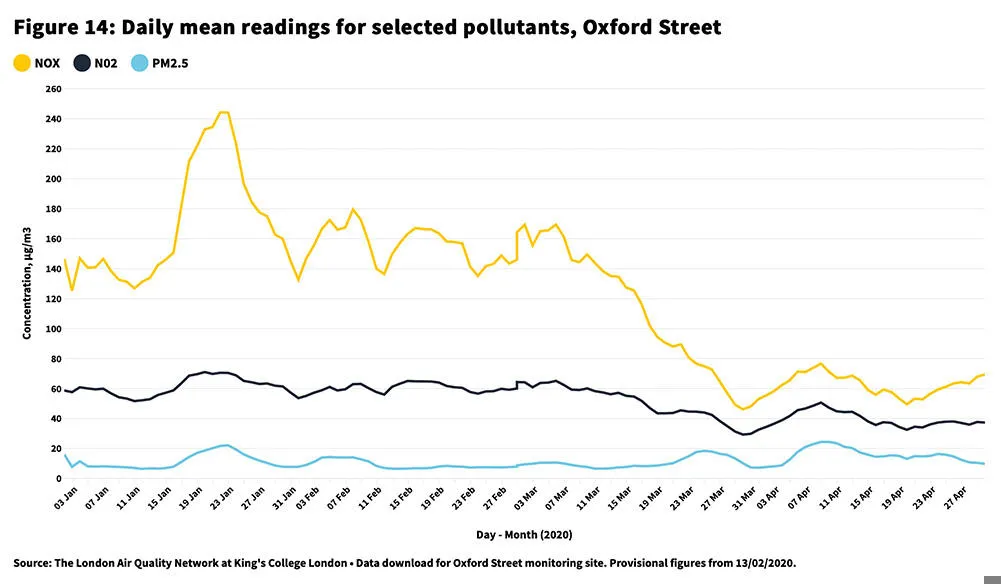London been hard hit by the pandemic, in terms of lives and livelihoods, though thankfully both confirmed cases and deaths in hospital appear to be falling. This report gives a snapshot of how city life has been affected to date – from employment, to shopping, to air quality. As we start to look to what lies beyond lockdown, and life begins to return to streets, workplaces, shops and restaurants, we will continue to track progress against this baseline.
Richard Brown, Deputy Director, Centre for London
08 May 2020
How coronavirus is impacting London
The effects of Covid-19 – and the measures to control it – on the capital
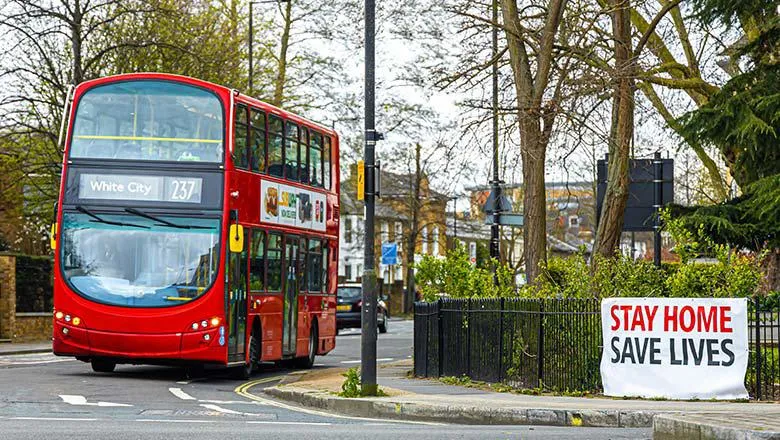
London was hit first and hardest by the coronavirus pandemic, with high mortality rates and a sharp slowdown in every aspect of city life – although the capital’s job market seems to have been relatively resilient, according to a new report.
The London Intelligence, by Centre for London in association with the Policy Institute and the Centre for Urban Science and Progress at King’s College London, shows how the capital has been affected to date in terms of Covid-19 cases and deaths, as well as the impact on business activity, labour market and behaviour.
Health impact
Mortality rates are higher in London compared to other UK cities...
London was hit earlier and harder by the virus compared to the rest of the country. In this first phase of the pandemic, London had the highest age-standardised mortality rate of UK major cities.
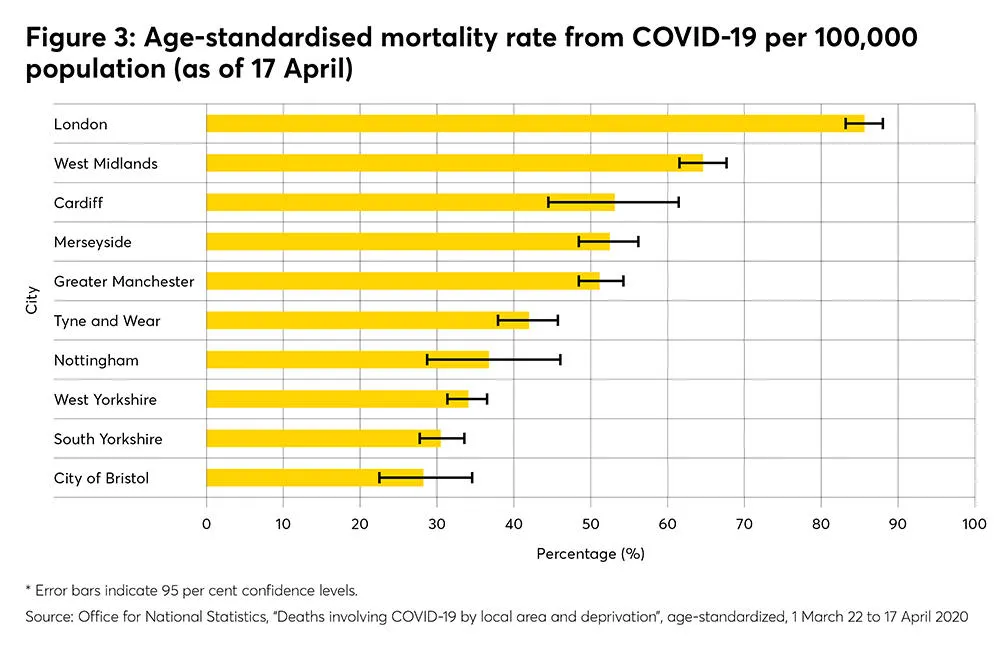
Within London, higher death rates are linked to deprivation
The death rate in the worst affected boroughs is twice that in the least affected. And boroughs with higher levels of deprivation – such as Newham, Tower Hamlets and Hackney – are also those with the highest age-standardised mortality rates from Covid-19.
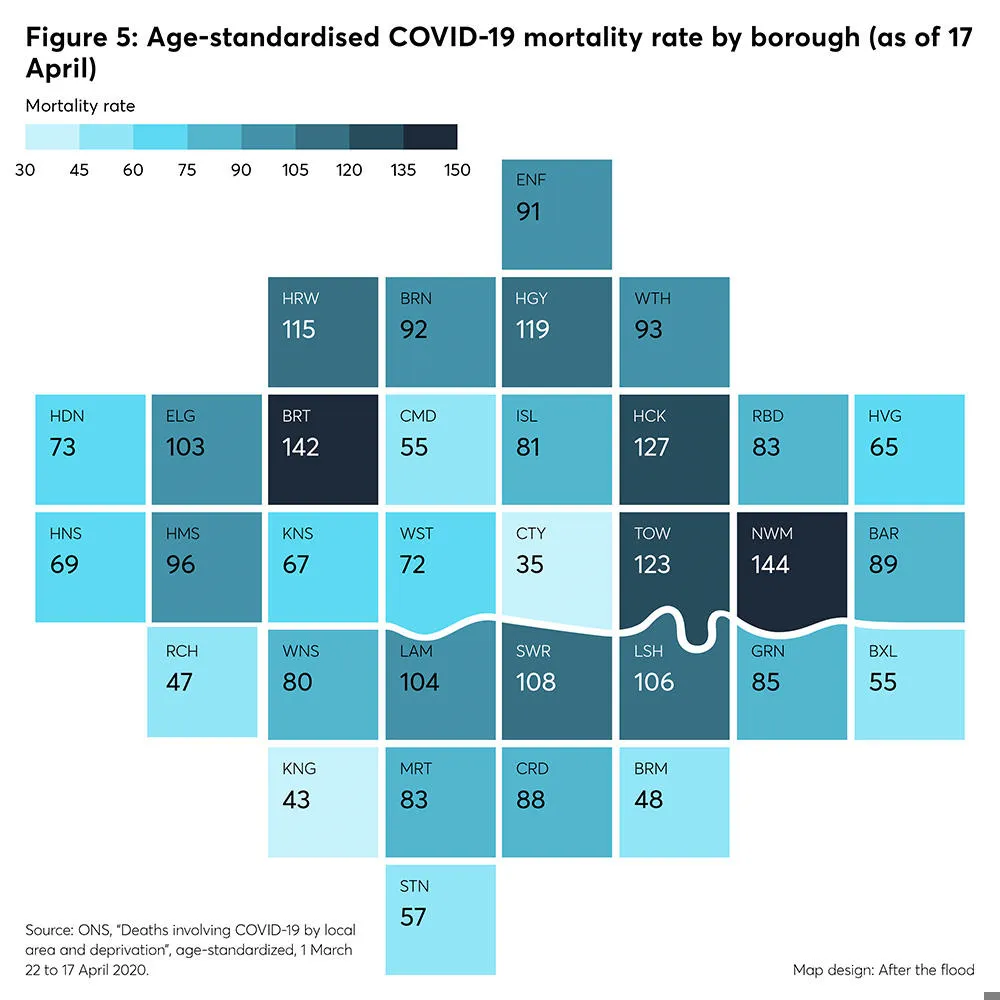
Economic impact and business outlook
London has seen the biggest drop in business activity
London saw a substantial drop in business activity in March, and the drop may deepen as lockdown continued in April. The decline is also 12 points steeper than that observed in the wake of the EU referendum vote in 2016.

While whole sectors of London's economy are inactive, others remain open
A survey run by the Greater London Authority found that about a third of London residents had either lost their jobs, been furloughed, or seen working hours reduced because of the Covid-19 crisis. London’s tourist and cultural economies have been severely impacted. But on a positive note, more than 70 per cent of businesses report they are still able to continue trading and 6 in 10 of those businesses say they are financially confident to continue operations throughout this crisis.
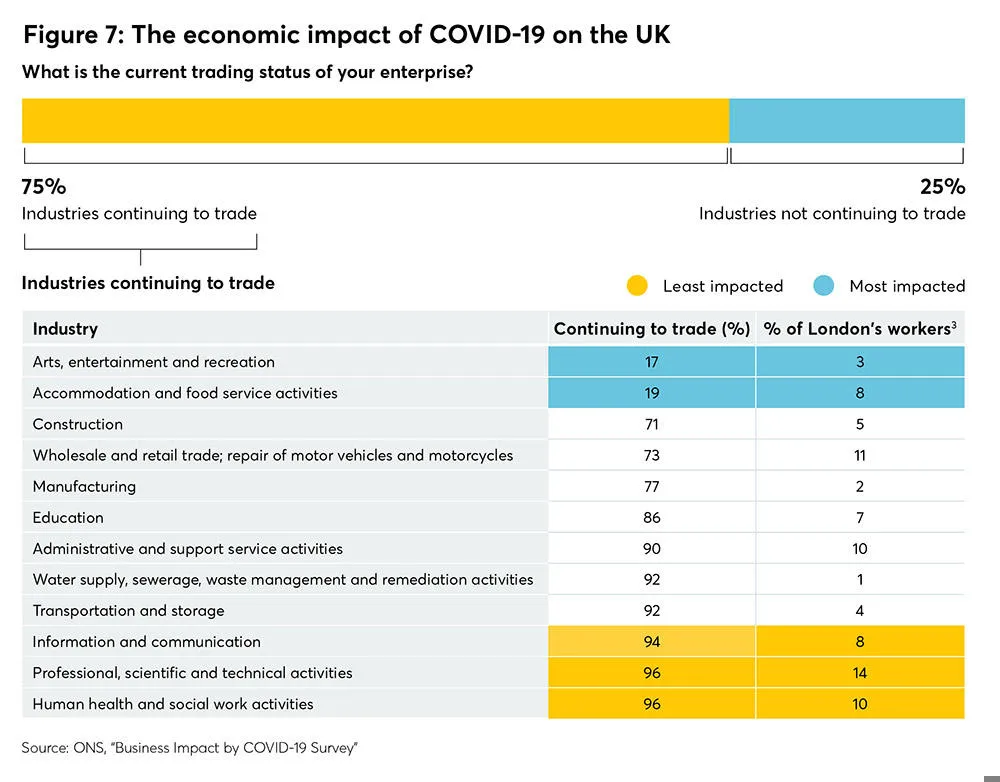
Recruitment has slowed markedly, but London's job market appears less affected than other regions
The GLA estimates that the fall in economic activity in London will be as steep as the national average. Job postings on Indeed in London were down by 49 per cent compared to last year but compared to the rest of the country, London seems slightly less affected at this point in the crisis.
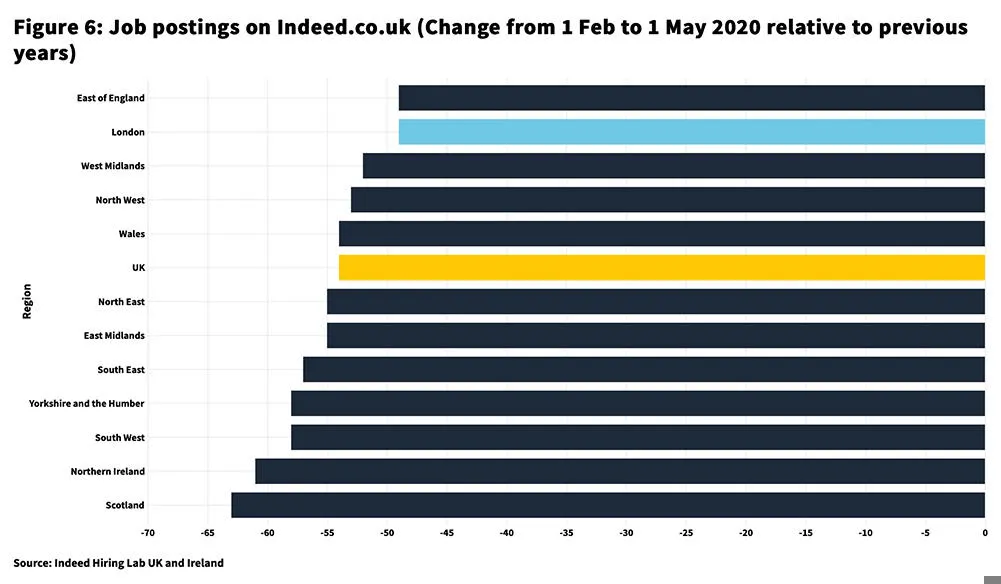
The Covid-19 pandemic poses fundamental challenges to the economies, quality of life and sustainability of major cities worldwide. Many of the key assets of successful global cities – such as connectivity, density and agglomeration – are proving also to be vulnerabilities. By providing a baseline and continuing to monitor the impact of the pandemic on London, we intend for our joint research to provide important evidence and insights for city and national polcy-makers both in London and elsewhere.
Mark Kleinman, Professor of Public Policy at the Policy Institute, King's College London
Mobility and economic activity
Most Londoners are staying away from their workplaces and from public transport
Since lockdown began workplace attendance is 70 per cent lower than normal, while trips to shops (outside basic services), restaurants and museums are down by 80 per cent. Tube and rail use is also down around 80 per cent. Trips to grocery stores and pharmacies have also fallen below their normal level, after a notable ‘stockpiling’ spike in mid-March.
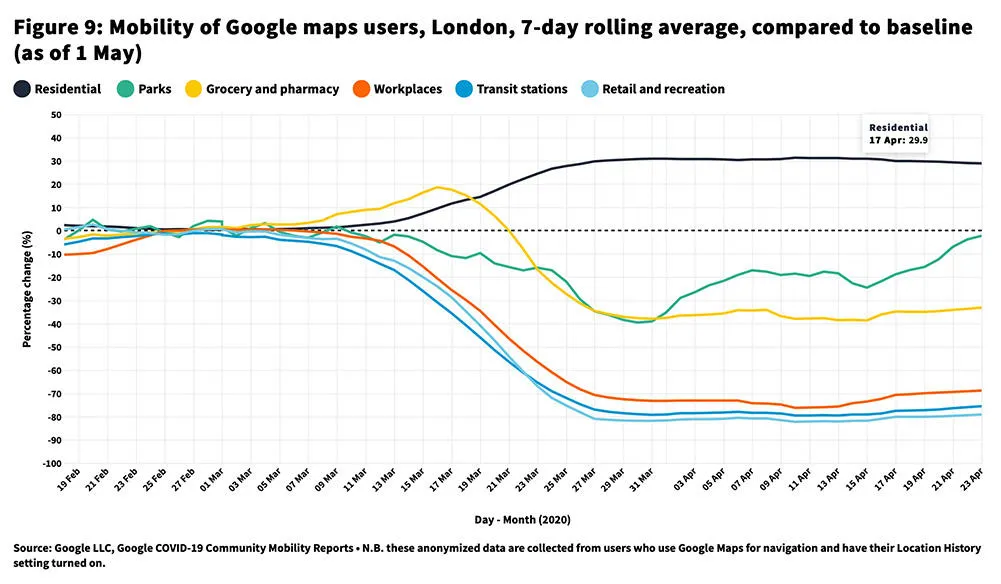
By international standards, London has seen a dramatic decline in movement
By international standards, London has seen a steep decline in activity during the lockdown phase, as measured by visits to places of work and consumption. Berliners and New Yorkers do not seem to have reduced their work and shopping trips as much as their counterparts in London and Paris in April, and neither have Tokyoites.
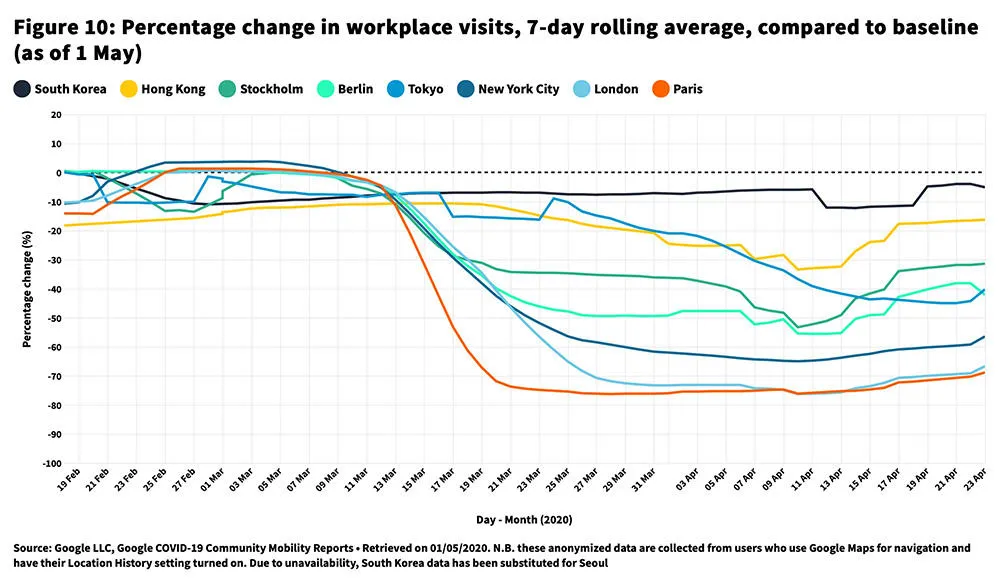
Global travel restrictions have led to a substantial reduction in departures from London’s major airports
London is among the five most visited cities in the world, and airports services are major employers in outer London. The dramatic slowing of international travel, if it persists, will represent a major shock for the city’s economy.
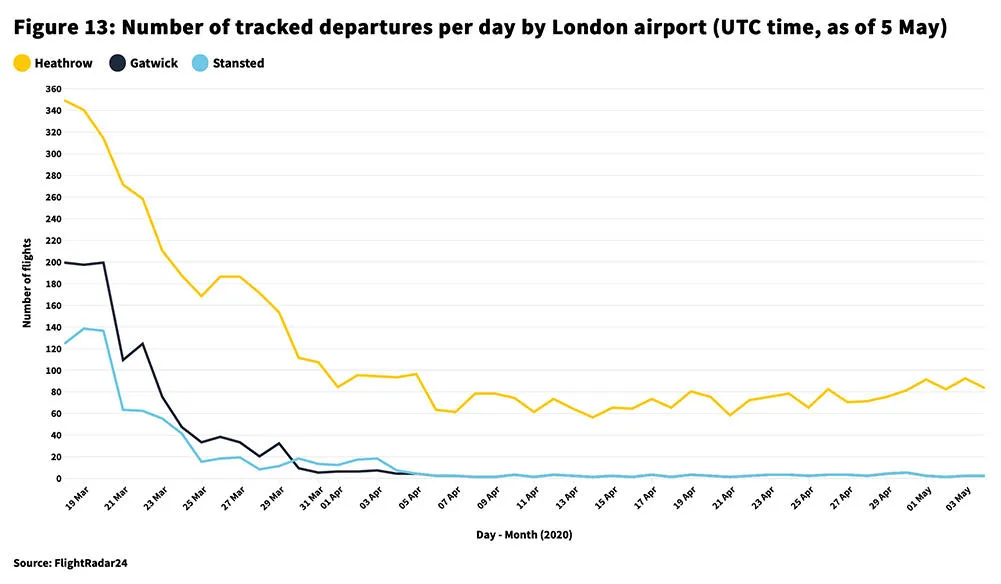
Lockdown has reduced emissions, especially in central London locations
Daily average NO2 has reduced by around 40 per cent at roadside sites in central London. The picture is particularly stark when we look at some of London’s busiest locations. Oxford Street has seen a 47 per cent reduction in daily average NO2 and for Marylebone Road concentration levels are 48 per cent below average.
